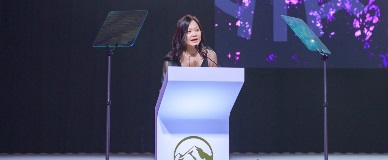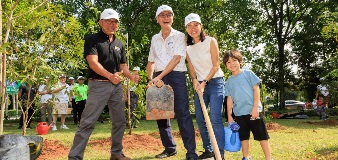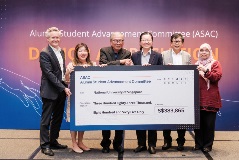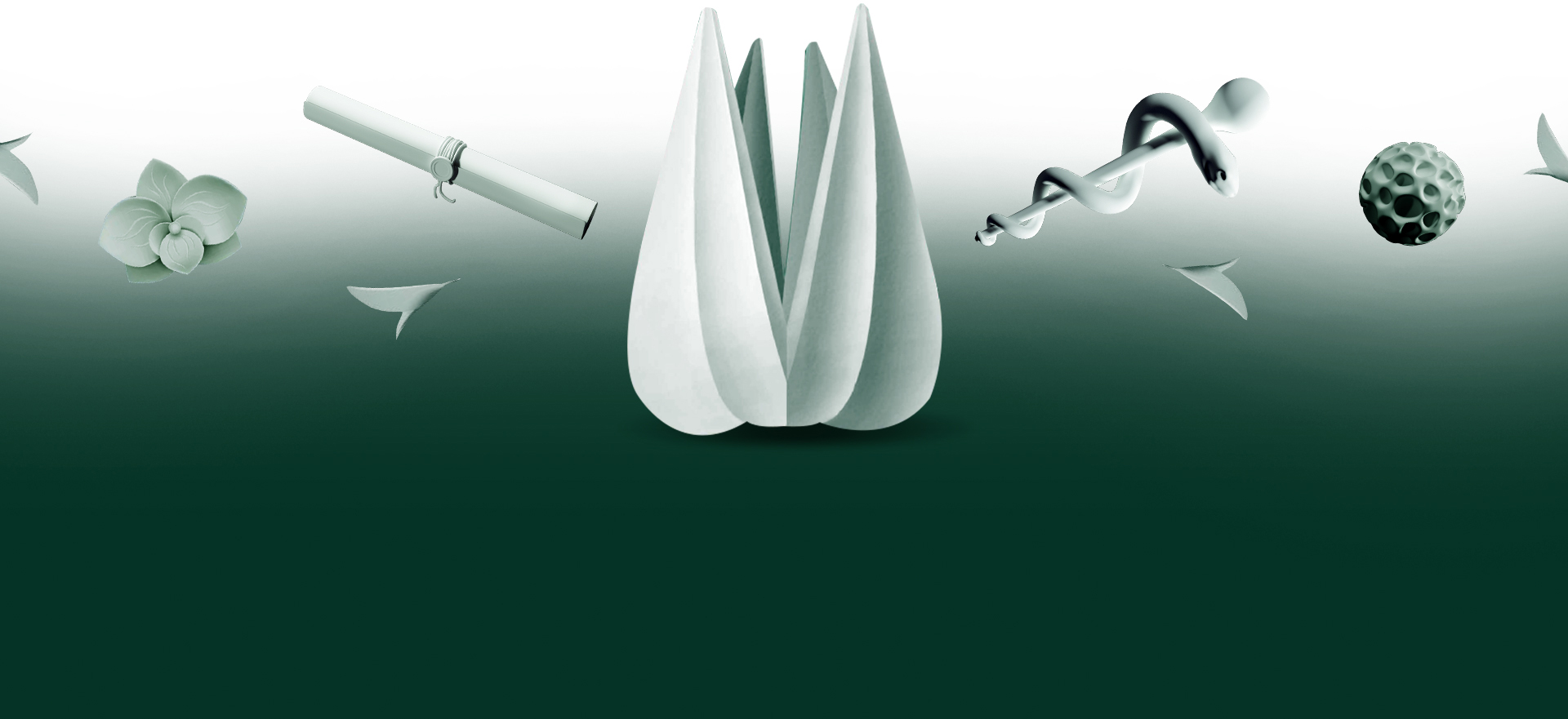Guests enjoyed a rare glimpse of what goes on behind the scenes at the NUS Lee Kong Chian Natural History Museum.
Just how close did guests come to a plethora of species and specimens hidden away in the depths of the Lee Kong Chian Natural History Museum (LKCNHM) at the “Up close with the NUS Lee Kong Chian Natural History Museum” event held on 17 January 2022”?
Apparently close enough to smell the ethanol in the Invertebrate Wet Collection area and feel the texture of some shell specimens (which were kept in plastic bags) in the Vertebrate Dry Collection area, which houses the Zoological Reference Collection of over a million specimens.
The NUS Lee Kong Chian Natural History Museum is a gallery filled with mysteries and wonders of the natural world and it was a special treat for guests at the event, packed with exciting tours not only around the gallery, but also levels hidden away from the public eye.
Guests got a rare glimpse of what goes on behind the scenes - sourcing, research, preservation, and preparations before the exhibits make it to the main gallery area for all visitors to enjoy.

Dr Chan Kin Onn, Curator of Amphibians & Reptiles, sharing about the recent discovery of a new species of tree toad from Malaysia, the yellow-spotted tree toad (seen here is Dr Chan holding a specimen).

Dr Ng Ting Hui, Curator of Freshwater Molluscs & Worms Collections, sharing on introduced species in Singapore, like the golden or channelled apple snails (specimens featured here) which were likely brought into the island via the ornamental pet trade. Having these specimens helps to keep track of when and where the species has been recorded in Singapore and be used for further research.
Away from the public gallery, research staff at the museum presented valued collections at specially set up stations and shared their studied impact on community and society. Donors were able to view samples at close range and even touch and feel some of the specimens.
An intriguing discussion was overheard in the invertebrate section on the ‘mentaiko’ spotted along the edge of the Singapore’s reservoirs, which caused quite a stir amongst nature lovers early last year. These were bright pink lumps found along water bodies in parks and reservoirs in Singapore, and many found the sight alarming. Some even described it as aliens from outer space. They are actually the eggs of golden apple snails native to South America and likely entered Singapore’s natural habitats through the aquarium trade in the 1980s. These snails pose a threat as a major pest in rice fields in Asia and are listed amongst 100 of the world’s worst invasive species.
Invited guests Mr Yeong Zee Kin and his wife Ms Audrey Chiang were impressed by the extensive collection.
“It was very interesting, especially going to the back to see what the staff and researchers do because that’s not what you usually see when you enter a museum… You don’t really see how people work behind the scenes. I thought it was quite interesting how they collect, classify, and preserve the specimens. And there were so many of them too,” Ms Chiang expressed.
Another guest, Mr Chau Tak Vui, shared, “Enthralling is the word I would use to describe this extremely unique experience of viewing the specimens up close, especially how the collections are managed behind the scenes, where most regular visitors will not be able to have access to.”
Much of the biodiversity research at the museum shapes Singapore’s relationship with nature and serves as a valuable resource that educates and informs policy-making and thought leadership.“Speaking to the museum staff gave us a better idea of how research is done (at the museum) and the collaborations with other research institutions overseas. I thought that this was quite an eye-opener,” said Mr Yeong Zee Kin.
After the tours, guests were invited to listen to presentations by speakers including Professor Koh Lian Pin, Director of the Centre for Nature-based Climate Solutions, who presented on the important role biodiversity research plays in nature-based solutions for climate change, and Dr Wan FA Jusoh, Research Fellow at LKCNHM, and Dr Ang Yuchen, Curator of Insects at LKCNHM, who shared some of our latest projects that harness digital technology to support the museum’s work.

Guests examining the specimens up close.







